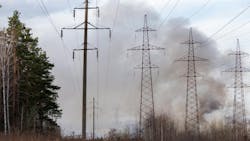PG&E Completes 1,000 Miles of Underground Powerlines to Reduce Wildfire Risk
Pacific Gas and Electric Company (PG&E) has completed and energized 1,000 miles of underground powerlines in areas of California identified as having a high risk of wildfire. The company describes this as the largest undergrounding effort ever undertaken by a utility to mitigate wildfire risk. According to PG&E, undergrounding powerlines in these areas eliminates nearly all wildfire risk associated with those lines.
Since 2023, PG&E reports that its system hardening measures — which include undergrounding, installing stronger poles and wires, and removing lines — have permanently reduced wildfire ignition risk across its system by 8.4%.
“Putting 1,000 miles of powerlines underground is a significant milestone for our customers as we work to reduce wildfire risk every day,” said Peter Kenny, PG&E’s senior vice president of Electric Operations. “When our CEO, Patti Poppe, announced in 2021 that we would put thousands of miles of powerlines underground, skeptics said it couldn’t be done. Well, not only are we at 1,000 miles and counting, but we also have substantially reduced the cost for our customers as we’ve scaled up our work.”
The underground powerlines currently serve customers in high fire-risk areas across 27 counties in Northern and Central California. These include 337 miles in Butte County, 119 miles in Shasta County, and more than 50 miles each in El Dorado, Lake, Placer, Plumas and Solano counties.
PG&E projects that by the end of 2026, 1,600 miles of powerlines will be underground, contributing to an estimated 18% reduction in wildfire risk across its system.
The company states that the cost of undergrounding has declined from $4 million per mile at the start of the program to $3.1 million per mile in 2025, with additional reductions anticipated. PG&E attributes these savings to factors such as hiring local contractors, using specialized construction equipment, reducing trench depth and width, repurposing soil from project sites, and avoiding ongoing vegetation management for overhead lines.
Matt Pender, PG&E’s vice president of Undergrounding and System Hardening, said, “It feels amazing to be making a difference that will last for many, many years, for decades, by putting these lines underground and reducing wildfire risk for the long run.”
PG&E notes that its wildfire prevention efforts combine multiple protective measures, including an expanded network of nearly 1,600 weather stations and more than 650 HD cameras, vegetation management covering over 960,000 trees, and the installation of 1,400 miles of strengthened poles and covered lines. The company reports that these measures have prevented major equipment-related fires in 2023 and 2024.
A report from the Stanford Woods Institute for the Environment recognized PG&E as one of the nation’s leading utilities for wildfire readiness, ranking its Wildfire Mitigation Plan at Tier 1 maturity — the highest level of preparedness in the assessment.
